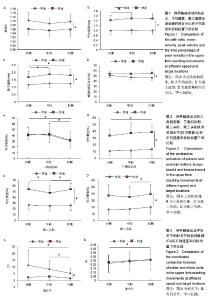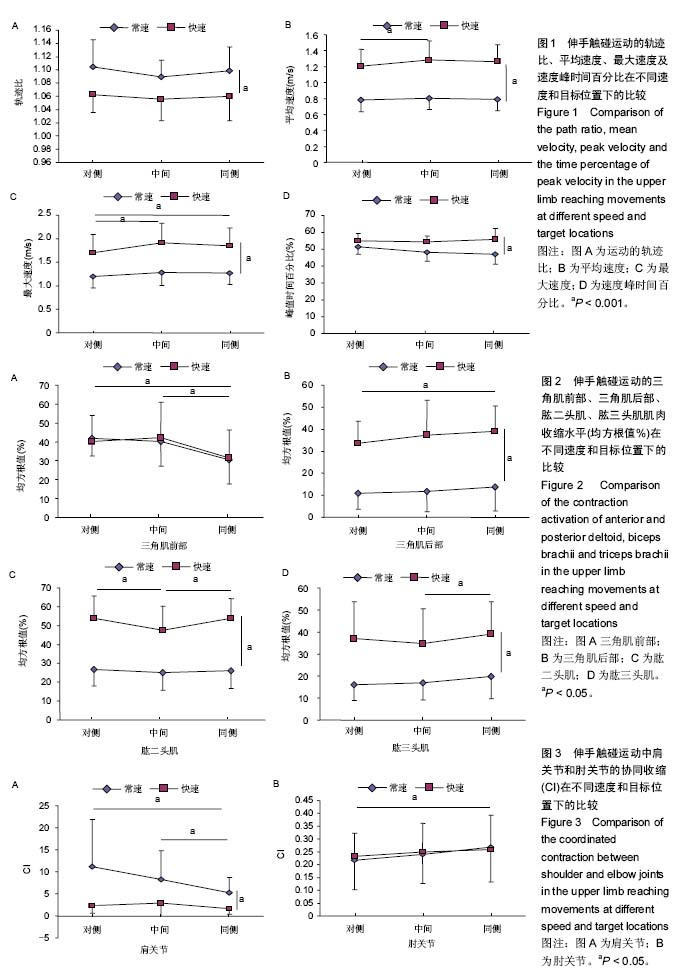| [1] Lum PS, Mulroy S, Amdur RL,et al. Gains in upper extremity function after stroke via recovery or compensation: Potential differential effects on amount of real-world limb use. Top Stroke Rehabil.2009;16:237.
[2] Carod-Artal J,Egido JA,Gonzalez JL,et al.Quality of life among stroke survivors evaluated 1 year after stroke:experience of a stroke unit. Stroke.2000;31: 2995-3000.
[3] van Dokkum L, Hauret I, Mottet D,et al. The Contribution of Kinematics in the Assessment of Upper Limb Motor Recovery Early After Stroke. Neurorehabil Neural Repair. 2013;28:4.
[4] 毛玉瑢,陈娜,陈沛铭,等.健康中老年人上肢负重状态下利手和非利手的三维运动学分析[J].中国组织工程研究, 2015,19(42): 6776-6781.
[5] Wagner JM, Lang CE, Sahrmann SA,et al. Sensorimotor impairments and reaching performance in subjects with poststroke hemiparesis during the first few months of recovery. Phys Ther.2007;87:751.
[6] Disselhorst-Klug C, Schmitz-Rode T, Rau G. Surface electromyography and muscle force: Limits in sEMG–force relationship and new approaches for applications. Clin Biomech.2009;24:225.
[7] Tresch MC,Jarc A.The case for and against muscle synergies.CurrOpinNeurobiol.2009;19(6), 601-607.
[8] Hu XL,Tong KY, Song R,et al.Quantitative evaluation of motor functional recovery process in chronic stroke patients during robot-assisted wrist training. J Electromyogr Kines 2009;19:639.
[9] Lin KC, Wu CY, Lin KH, Chang CW. Effects of task instructions and target location on reaching kinematics in people with and without cerebrovascular accident: a study of the less-affected limb. Am J Occup Ther.2008; 62:456.
[10] Wu CY, Lin KC, Lin KH,et al. Effects of task constraints on reaching kinematics by healthy adults. Percept Mot Skills.2005;100:983.
[11] Thielman GT, Dean CM, Gentile AM. Rehabilitation of reaching after stroke: Task-related training versus progressive resistive exercise. Arch Phys Med Rehab 2004;85:1613.
[12] Schaefer SY, DeJong SL, Cherry KM, et al. Grip type and task goal modify reach-to-grasp performance in post-stroke hemiparesis.Motor Control.2012;16(2): 245-264.
[13] van Vliet PM, Sheridan MR.Ability to adjust reach extent in the hemiplegic arm.Physiotherapy.2009; 95(3), 176-184.
[14] DeJong SL, Schaefer SY, Lang CE. Need for speed: better movement quality during faster task performance after stroke. Neurorehabil Neural Repair. 2012;26:362.
[15] Lin KC, Wu CY, Lin KH, et al. Effects of Task Instructions and Target Location on Reaching Kinematics in People With and Without Cerebrovascular Accident: A Study of the Less-Affected Limb. Am J Occup Ther. 2008;62(4): 456-465.
[16] Todor JI, Cisneros J.Accommodation to increased accuracy demands by the right and left hands. J Mot Behav.1985;17:355.
[17] McCrea PH, Eng JJ. Consequences of increased neuromotor noise for reaching movements in persons with stroke. Exp Brain Res.2005;162:70.
[18] Ma HI, Trombly CA..Effects of Task Complexity on Reaction Time and Movement Kinematics in Elderly People.Am J OccupTher.2004;58(2), 150-158.
[19] D'Avella A,Fernandez L,Portone A,et al. Modulation of Phasic and Tonic Muscle Synergies With Reaching Direction and Speed. J Neurophysiol.2008; 100(3): 1433-1454.
[20] D'Avella A, Lacquaniti F. Control of reaching movements by muscle synergy combinations. Frontiers in Computational Neuroscience 2013;7.
[21] Carnahan H. Manual asymmetries in response to rapid target movement. Brain Cogn 1998;37:237.
[22] Carey DP,Hargreaves EL,Goodale MA.Reaching to ipsilateral or contralateral targets: within-hemisphere visuomotor processing cannot explain hemispatial differences in motor control. Exp Brain Res.1996; 112:496.
[23] Levin M.Interjoint coordination during pointing movements is disrupted in spastic hemiparesis. Brain.1996;119:281-293. |

